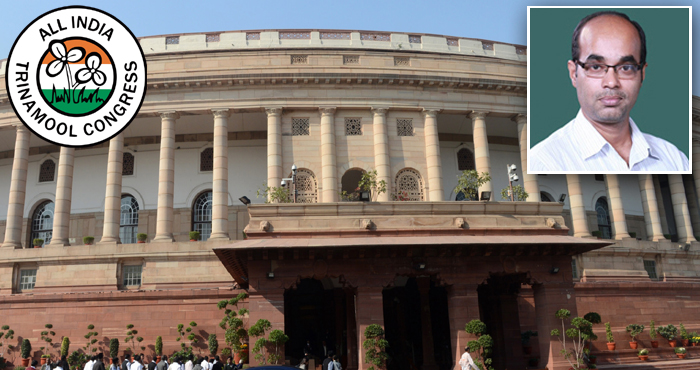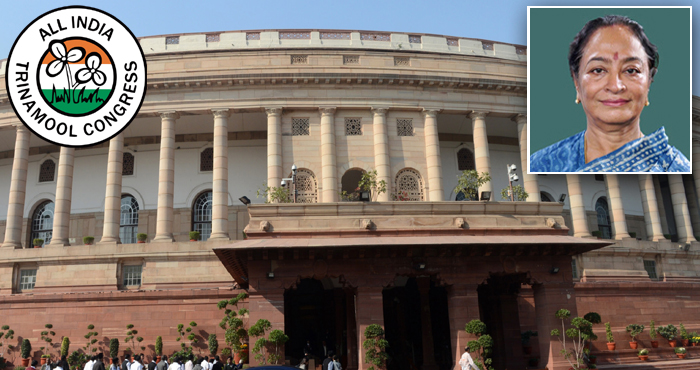Madam Speaker, Bhola Singh ji ne jo kaha hai, ki Pradhan Mantri Ji aur khas kar ke Arth Mantri ji ne batti jalaya aur sab jagao me wo batti jalte rehte hai, lekin ye batti Bihar tak poucha hai aur uske baad ye batti Paschim Bangal me gaya nahi. Mai asha karta hu ki is budget se to kuch huch hua nahi rajya ke sarth me. Magar next year me jab budget ghoshit hoga us time me humara rajya pe kendriya sarkar dhyan dega.
Madam Speak, aapko bahut abhar vyakt karta hu mai.
What was the expectation from this Budget 2016-17? Expectations in the domain of personal taxation, expectations for home buyers, expectations in the domain of GDS limit, structural reforms expected from this Budget, path of fiscal consolidation which was an important aspect, expectations surrounding the National Pension Scheme—all these expectations are not being fulfilled. Partly, a section of the society can gain something but at large major share of the society is deprived of getting the benefits from this current Budget, 2016-17. That is why, our Finance Minister of West Bengal, Shri Amit Mitra told that the Budget was directionless, and this is a Budget without any vision. This Budget is not people-centric, and there is nothing in the Union Budget for West Bengal. I want to highlight some important aspects in relation to agriculture and farmers’ welfare for which the Government has allocated a considerable fund of Rs.35,984 crore. Among these, 28.5 lakh hectares of land will be brought under irrigation; five lakh acres to be brought under organic farming over a three-year period; Rs.60,000 crore for recharging of ground water in India; Dedicated Irrigation Fund in NABARD with Rs.20,000 crore; and nominal premium and highest ever compensation in the case of crop losses under the PM Fasal Bima Yojana. The Finance Minister, Shri Arun Jaitely in his ‘Make in India’ Budget speech laid more emphasis on agriculture and farmers’ welfare with an aim to double the farmers’ income in the next five years. He laid thrust on the rural sector and social sector, including health care, educational skills and job creation to make India a knowledge based productive economy. He announced various allocations to agriculture and farmers’ welfare sector with a total expenditure of Rs.35,984 crore. He also made announcements on infrastructure investment to enhance quality of life and bring financial sector and governance reforms to reduce compliance burden. He added that nominal premium is also being implemented from this Budget. As key States including West Bengal gear up for assembly elections, it was not surprised that agriculture took the top slot in Finance Minister’s Budget for 2016-17. In his speech, Jaitley said that India was a bright spot in the global economy as he outlined his nine focus areas with social programmes and rural development taking at number 2 entry slots. With agriculture being the main stage of economy in States like West Bengal, Modi’s Government t hrust on rural development is bound to boost BJP in the poll-bound States and that is why they are focussed mainly on agriculture. Rising rural distress after back to back drought and having heavy defeat in Bihar have upset the calculus. The Government estimates that four of 10 Indians rely directly on farming for their livelihood. Jaitley also assured that the Government intended to double the income of the farmers in coming five years. He told a unified agriculture platform will be dedicated to the nation on the Birth Anniversary of Dr. B.R. Ambedkar. The Government all the time is talking about Ambedkar; they take the name of Ambedkar; but they are not doing much for the people of Ambedkar. I request him to allocate proportionate funds for SC/ ST Sub Plans and place them everywhere in social strata – service sector, education sector, etc. The Government should secure their livelihood and respect them in a true way. By doing these things – not by installing monuments and memorials – they can really respect Dr Ambedkar. If you respect the down-trodden people, the depressed classes, SC/ST communities and improve the budgetary allocation for them, which will be the right way to respect Dr. Ambedkar. The Government all the time gives emphasis on looking towards Eastern India. But what has the Government given to Eastern India, especially to West Bengal, the gateway of Eastern India? We have a long legitimate demand of setting up of a Central Agricultural University in West Bengal. But this has not been taken up by the Government. West Bengal is the right place for setting of such a university because it has good agricultural productivity. Almost all crops can be grown there and even in some of the horticulture crops West Bengal plays a leading role. Therefore, I urge upon the Union Finance Minister that when he is going to announce for the next Budget, he ensures that West Bengal gets a Central Agriculture University for the benefit of the people of the State. Similarly, there is a need for Central Horticulture University. Some States of the Indian Union have Central Horticulture Universities. But in spite of West Bengal’s position and contribution in the production of vegetables, flowers and fruits, there is no such university in my State. If we compare the State of West Bengal with other advanced States of the Indian Union, the number of ICAR institutes is much less in West Bengal. So, we urge upon the Union Government to set up more institutes and sub-centres of CRIDA, IISER, Rice Research Institutes, etc. in West Bengal for boosting up agriculture production. Another important thing, not relating to agriculture, is Nabadwip birthplace of Mahaprabhu Shri Chaitanya and renowned Shri Vaishnao Dham. This should be taken up as a national heritage. But that is also neglected by the Central Government. So, I once again request the Central Government to look into the matter and accord national heritage town status to Nabadwip Dham.


